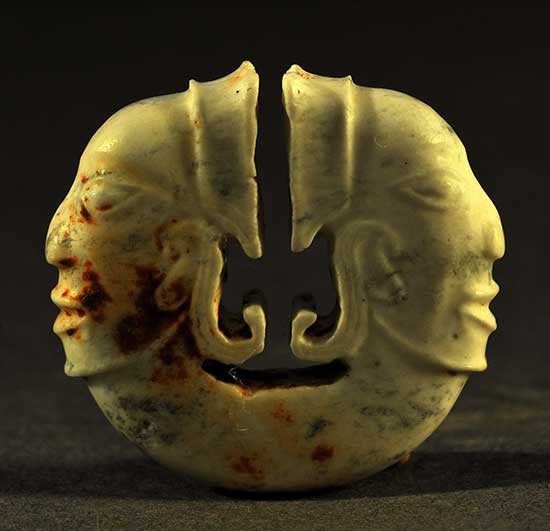 |
|
Jadeware, excavated in November from Tianmen county, Hubei province, include (clockwise from top left) a tiger, double-head figurine, two birds, human head and curved cicada.[Photo provided by Shijiahe Relics Archaeological Team of Hubei Provincial Archaeological Research Institution]
|
The sophisticated jade carvings and sculptures dating back to about 4,000 years ago, were excavated in Tianmen county, Hubei province. Previous archaeological research and excavations there have determined that the pieces were made in the late Shijiahe Culture (2,500 BC-2,000 BC) period, a late Neolithic culture that succeeded the Qujialing Culture (3,400 BC-2,600 BC) in the same region with rare artifact and design of painted spindle whorls.
Pristine figurines made with pottery and jades crafted with the locally produced gems and distinctive techniques were particular to the Shijiahe Culture, notably the way sculpted lines remain attached to but are slightly raised against the background of jade material.
The relief technique requires time-consuming chiseling of the background. The discoveries include an openwork plaque with two birds standing on an animal face and a double-headed figurine with the typical relief design, says Wu Tarng-hae, a senior researcher at the Shanghai-based Aurora Museum.
Wu, a prestigious Taiwan expert in ancient Chinese art, especially jade research, says the relief line pattern of Shijiahe jadeware is achieved by consecutive scraping or wearing down the jade surface background between parallel carved lines.
Rubbing and polishing then make the line slightly raised on the jade surface, creating a three-dimensional effect when the jade surface is viewed at different angles and lighting conditions.
China's age-old jade tradition is characterized by many innovations in different cultures and dynasties.
